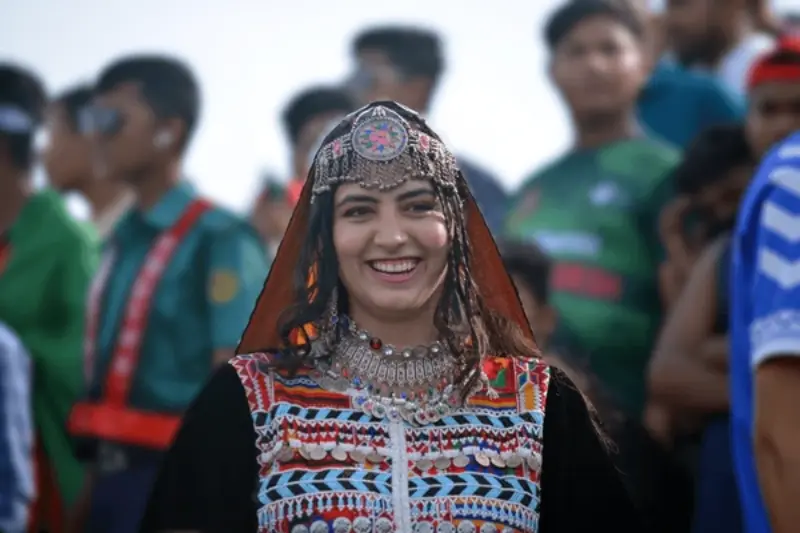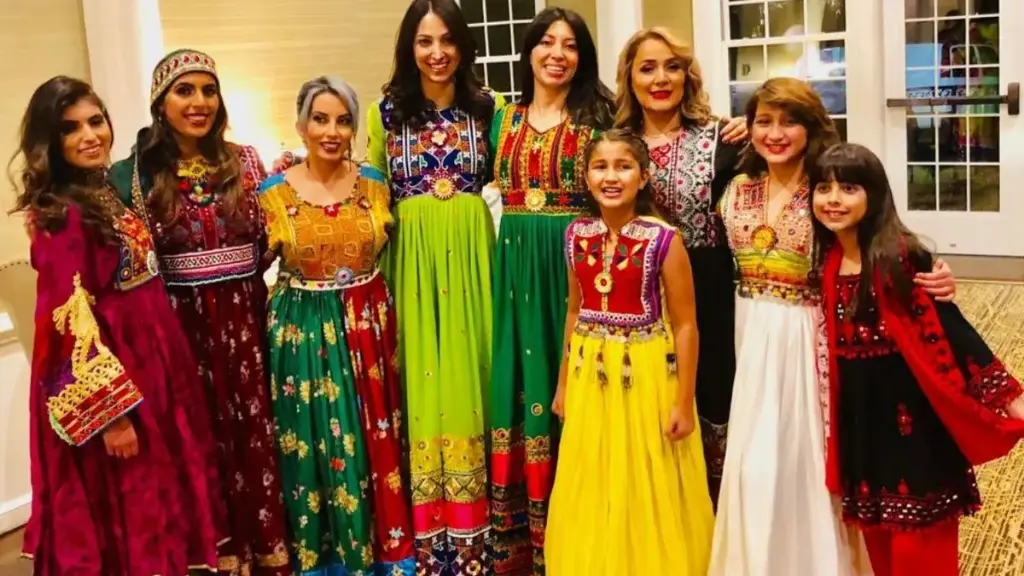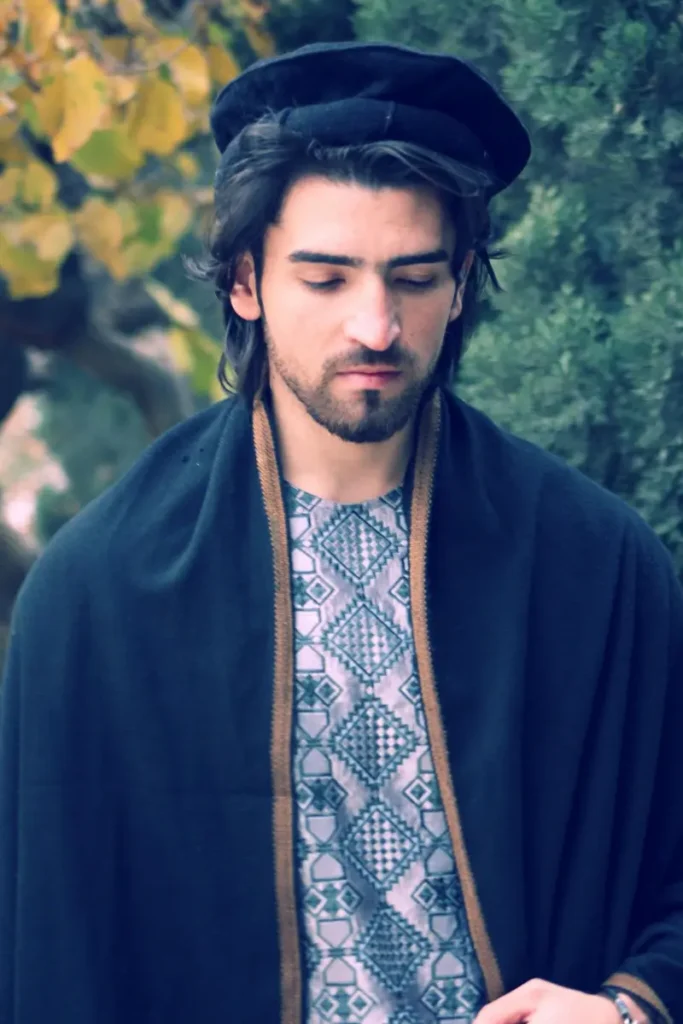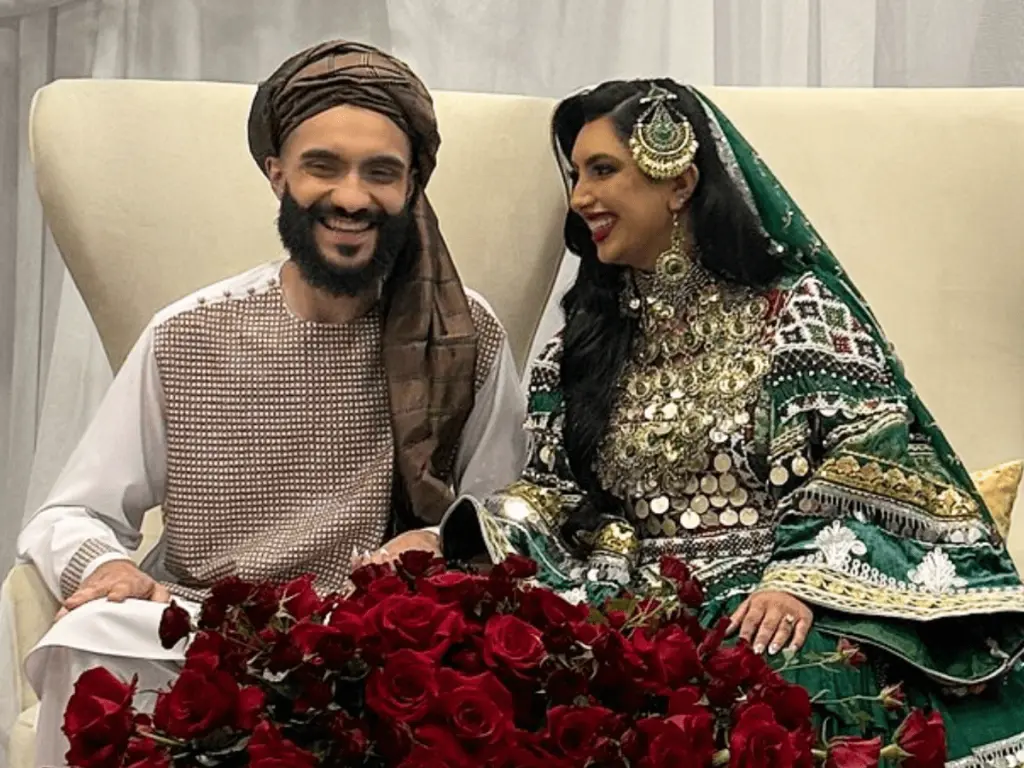From the rugged mountains to the fertile plains, Afghanistan’s diverse landscape is mirrored in the vibrant and intricate tapestry of its traditional clothing. Afghan attire is not merely fabric and thread; it embodies a rich heritage, social values, and the enduring spirit of a nation that has endured centuries of change.
This article delves into the fascinating world of Afghan traditional clothing, exploring its history, cultural significance, and the myriad ways it continues to reflect the country’s unique identity.

A Journey Through Time: The Evolution of Afghan Clothing
The history of Afghan clothing is intricately woven with the country’s long and turbulent past. Ancient civilizations, including the Greeks, Persians, and Central Asian nomads, have left their mark on Afghan fashion, resulting in a unique blend of influences. Archaeological evidence suggests that Afghan clothing styles have evolved over centuries, influenced by factors such as climate, trade routes, and cultural exchanges.
Pre-Islamic Era: Roots in Ancient Traditions
Prior to the advent of Islam in the 7th century, the clothing worn in Afghanistan was primarily influenced by the nomadic tribes who inhabited the region. Archaeological finds reveal the presence of simple tunics, trousers, and head coverings made from materials like wool and leather.
See also The Zocos Gallegos the traditional footwear with history
The Zocos Gallegos the traditional footwear with history
These garments served practical purposes, providing protection against the harsh weather and facilitating mobility. The use of vibrant colors and intricate embroidery indicates a strong artistic tradition that existed even in ancient times.
The Islamic Influence: New Fabrics and Styles
The arrival of Islam in Afghanistan brought significant changes to the country’s fashion landscape. The introduction of new fabrics like silk and cotton, imported from the East, enriched the variety of materials used in clothing.
Traditional garments were adapted to conform to Islamic principles of modesty. The *chapan*, a long, flowing coat, became a staple for both men and women, providing warmth and concealing the body. The *burqa*, a full-body veil, was adopted in some regions as a symbol of female modesty. The integration of Islamic influences into Afghan clothing continues to this day.
The Mughal Era: A Flourish of Opulence
During the Mughal Empire (16th-19th centuries), Afghanistan experienced a period of relative stability and cultural flourishing. This era saw the introduction of elaborate textiles, fine embroidery, and luxurious embellishments to Afghan clothing. The influence of Persian fashion, with its emphasis on elegance and sophistication, further enriched Afghan dress.
See also The Beret Navarra the accessory with Identity
The Beret Navarra the accessory with Identity
The *shalwar kameez*, a traditional garment comprising loose-fitting trousers and a long tunic, became widely popular among both men and women. This period witnessed a remarkable fusion of Afghan traditions with the artistry and grandeur of the Mughal court.
Weaving Culture: The Significance of Afghan Traditional Clothing

Afghan traditional clothing goes beyond mere aesthetics; it embodies a profound cultural identity and communicates important social and tribal affiliations. The intricate details, colors, and styles tell stories of history, lineage, and community. Each garment reflects the diverse tapestry of Afghan life.
Gender and Identity: A Symphony of Visual Cues
In Afghan culture, clothing plays a pivotal role in defining gender roles and social status. While there are common elements in both men’s and women’s attire, distinct features differentiate their clothing. Men’s traditional clothing emphasizes practicality, while women’s attire often embodies elegance and artistic expression.

The colors, patterns, and embellishments used in a woman’s dress can convey information about her marital status, social standing, and tribal affiliation. The use of jewelry and head coverings also carries significant cultural meanings, reflecting the rich traditions of Afghan women.
Tribal Affiliations: A Visual Language of Identity
Afghanistan is home to a multitude of ethnic groups, each with its own unique customs and traditions, reflected in their clothing. Different tribes often wear distinct garments, colors, and patterns that serve as visible markers of their identity.
The *pashtun* tribes, for example, are known for their vibrant *kandhar* shawls, while the *tajik* tribes favor intricate embroidery and the *turban*. The diverse styles of Afghan clothing provide a fascinating window into the country’s rich ethnic tapestry.
Ceremonial Attire: Celebrating Life’s Milestones
Special occasions and ceremonies are marked by the wearing of elaborate and symbolic attire in Afghan culture. Weddings, religious festivals, and important cultural events are celebrated with garments adorned with intricate embroidery, rich colors, and precious stones.

The bride’s dress, in particular, is often a masterpiece of craftsmanship, reflecting the family’s wealth and social standing. These ceremonial garments serve as visual expressions of joy, celebration, and cultural continuity.
The Modern Landscape: Tradition and Transformation
While Afghan traditional clothing remains deeply entrenched in the country’s cultural fabric, modern influences are gradually shaping the fashion landscape. Globalization, urbanization, and changing lifestyles are leading to a gradual shift in preferences, particularly among younger generations.
However, the enduring appeal of Afghan attire, combined with efforts to preserve cultural heritage, ensures that traditional garments continue to hold a prominent place in the country’s fashion scene.
Contemporary Interpretations: A Fusion of Heritage and Innovation
Contemporary designers are embracing Afghan traditional clothing as a source of inspiration, creating modern interpretations of classic garments. The use of traditional fabrics and patterns is often integrated with modern tailoring techniques and innovative silhouettes.
This fusion of heritage and innovation reflects a growing appreciation for the enduring beauty and cultural significance of Afghan attire. These modern interpretations allow traditional garments to resonate with a wider audience, ensuring their continued relevance in a rapidly changing world.
Challenges and Opportunities: Preserving Authenticity
While Afghan traditional clothing is experiencing a resurgence in popularity, it faces challenges in the modern era. Mass production, the availability of imported clothing, and changing societal norms can pose threats to the authenticity and craftsmanship of traditional garments.
It is crucial to preserve the heritage of Afghan clothing by supporting local artisans, promoting sustainable practices, and encouraging the use of traditional techniques. This ensures that the intricate artistry and cultural significance of Afghan attire continue to be passed down through generations.
FAQs: Afghan Traditional Clothing
What are the most common types of Afghan traditional clothing?
The most common types of Afghan traditional clothing include:
- Chapan: A long, flowing coat worn by both men and women, often made of wool or cotton.
- Shalwar Kameez: A traditional garment consisting of loose-fitting trousers (shalwar) and a long tunic (kameez) worn by both men and women.
- Burqa: A full-body veil worn by women in some regions of Afghanistan.
- Turban: A head covering worn by men, particularly in the Pashtun community, signifying social status and tribal affiliation.
- Kandhar Shawl: A vibrant shawl worn by Pashtun women, known for its intricate embroidery and colorful patterns.
What are the cultural significances of the colors and patterns used in Afghan traditional clothing?
The colors and patterns used in Afghan traditional clothing hold deep cultural significance. For example:
- Red: Represents passion, courage, and strength, often associated with the Pashtun tribes.
- Green: Symbolizes peace, prosperity, and Islam, commonly used in both men’s and women’s attire.
- Blue: Often associated with royalty and nobility, reflecting the influence of Persian culture.
- Gold: Represents wealth and prosperity, used in ceremonial attire and jewelry.
- Intricate patterns: Often symbolize tribal affiliations, family history, and religious beliefs.
How has modern fashion influenced Afghan traditional clothing?
Modern fashion has influenced Afghan traditional clothing in several ways:
- Contemporary interpretations: Designers are incorporating traditional elements into modern styles, creating new and innovative garments.
- Fusion of materials: Traditional fabrics like silk and cotton are being combined with modern materials like synthetics, resulting in hybrid garments.
- Increased accessibility: Online platforms and international fashion shows have made Afghan traditional clothing more accessible to a wider audience.
Conclusion: A Legacy of Beauty and Resilience
Afghan traditional clothing is a vibrant testament to the country’s rich cultural heritage and its enduring spirit. From the ancient traditions of nomadic tribes to the artistic influences of the Mughal era, Afghan attire has evolved over centuries, reflecting the country’s complex history and diverse cultural landscape.
While modern influences are shaping the fashion scene, the enduring appeal of traditional garments, combined with efforts to preserve cultural heritage, ensures that Afghan clothing will continue to be a source of pride and identity for generations to come.
The intricate details, vibrant colors, and symbolic significance of Afghan traditional clothing serve as a powerful reminder of the country’s resilience, its cultural richness, and the enduring spirit of its people.